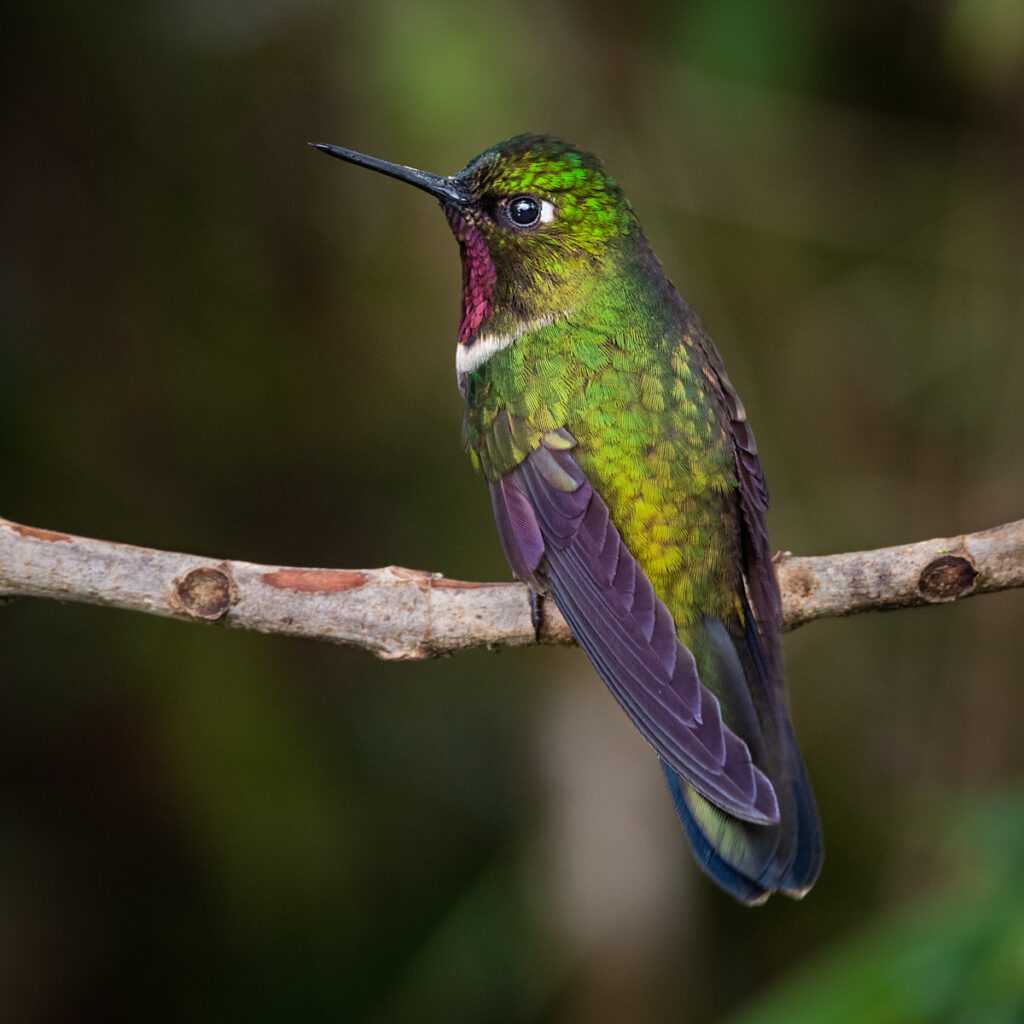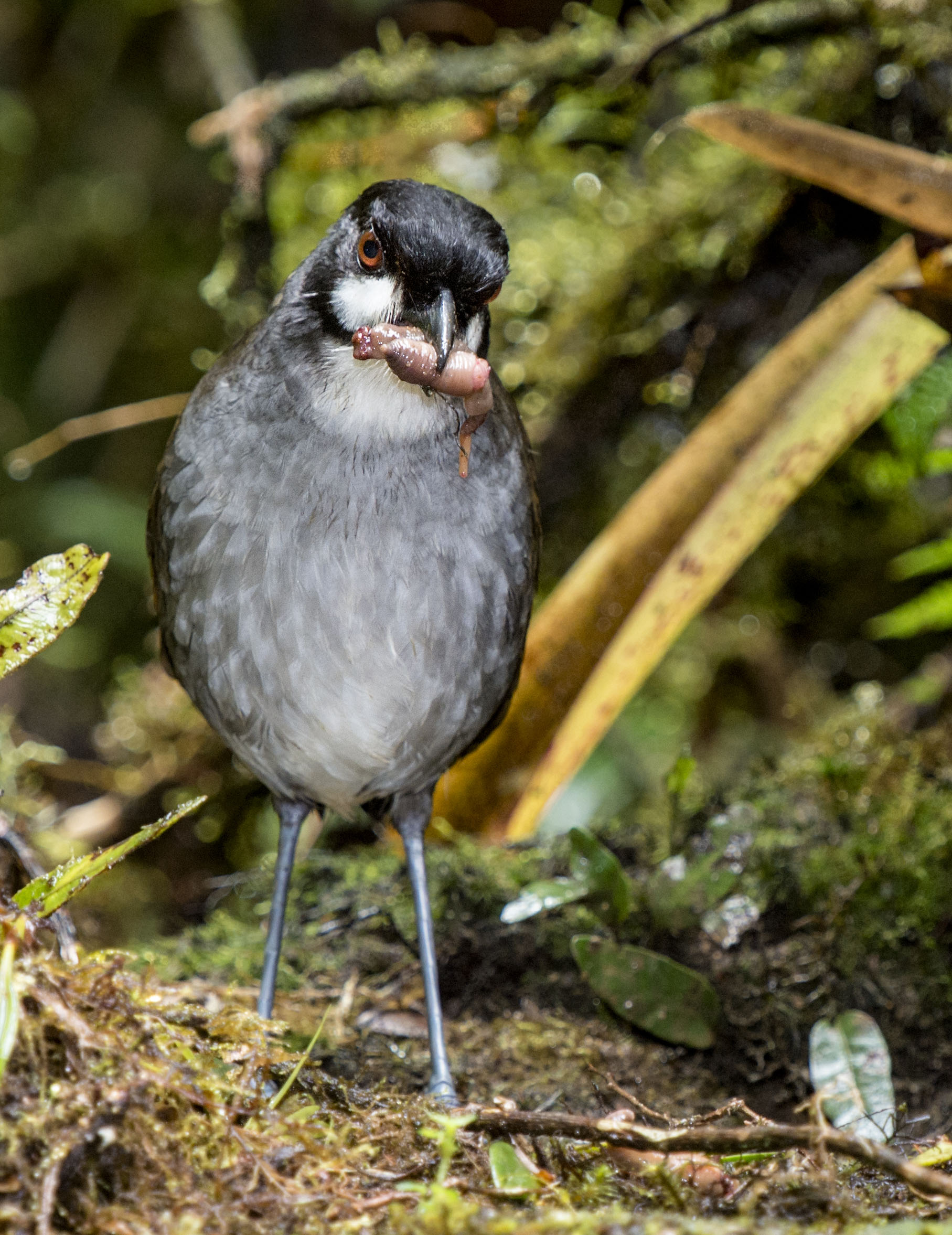
By Daniel J. Lebbin, Vice President of Threatened Species, American Bird Conservancy
Antpittas were once among the most prized Neotropical birds to see for birders, because they are often very difficult to see in their dense forest habitat, particularly in the Andes of South America. More recently, antpittas have become some of the most reliable and easy birds to see at feeding stations where birds have been habituated to come in for worms at particular times of day in front of gawking bird watchers and photographers. This revolutionary method was pioneered at Ecuador’s Refugio de la Paz by Angel Paz. Now, Antpitta feeding can now be found at many lodges in the Neotropics, particularly in Colombia and Ecuador.
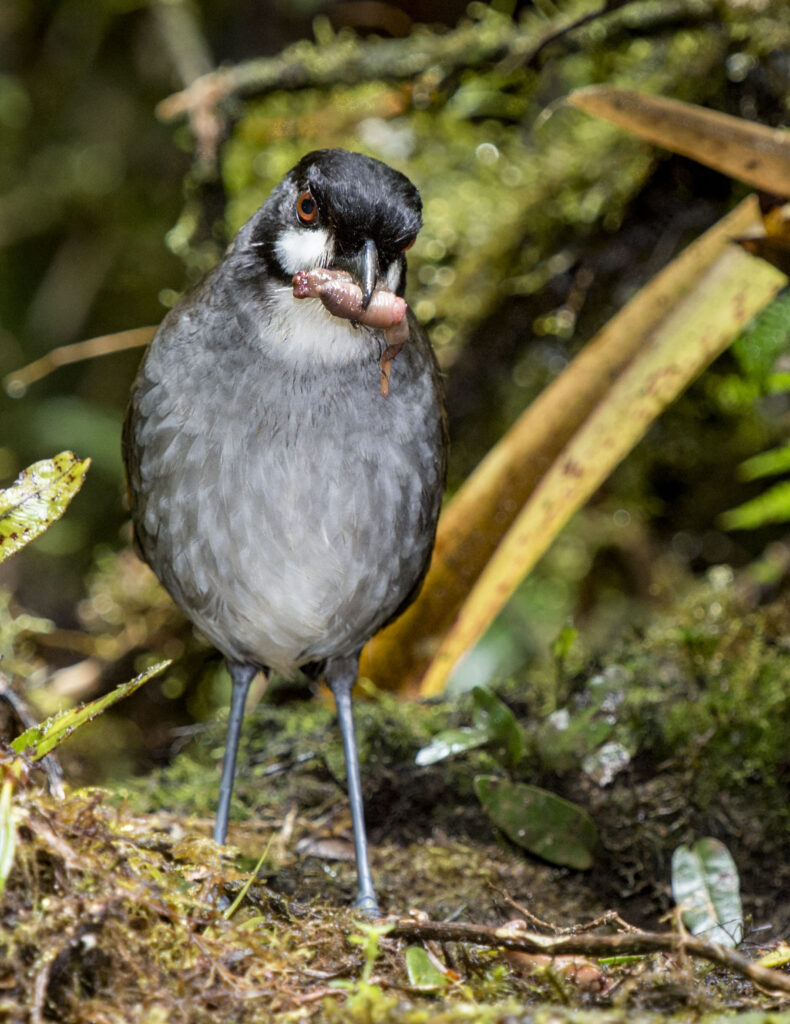
Tapichalaca Reserve was established by Fundación Jocotoco Ecuador to protect the habitat of the site locality of the Jocotoco Antpitta, which is one of the largest and most beautiful of the entire family Grallaridae. The Jocotoco Antpitta is large and in-charge, like a bouncing (American) football in the cloud forest. During my first and only visit to Tapichalaca Reserve, I stayed at Casa Simpson (the lodge at this reserve) and walked the trails alone and slowly to see this species. I got lucky, as I could hear them on a misty morning and revealed themselves to me on the side of the trail, enough that I could get at least some mediocre photos on December 11, 2005. I also saw Chestnut-naped Antpitta, Equatorial Antpitta (previously lumped with the Rufous Antpitta complex), Slate-crowned Antpitta, Barred Antthrush, and Ocellated Tapaculo – and other cloud forest skulkers on this trip. This was all before anpitta feeding had started here. For years now, birders have been able to view the Jocotoco Antpitta and other species much more easily at their feeding station near Casa Simpson – with the antpittas emerging from the jungle just a few feet away from observers.
Antpittas have also been in the news lately due to their changing taxonomy. In 2020, researched published findings that the Rufous Antpitta complex of three previously described species (Rufous, Bicolored, and Chestnut) should be recognized as 16 species instead of three. This Zootaxa paper described 6 new species, a single new subspecies, and elevated 7 previous subspecies to species-level status. The Equatorial Antpitta of Tapichalaca, was one of these splits from the prior Rufous Antpitta. A summary of this paper for a lay audience is provided at BirdGuides.
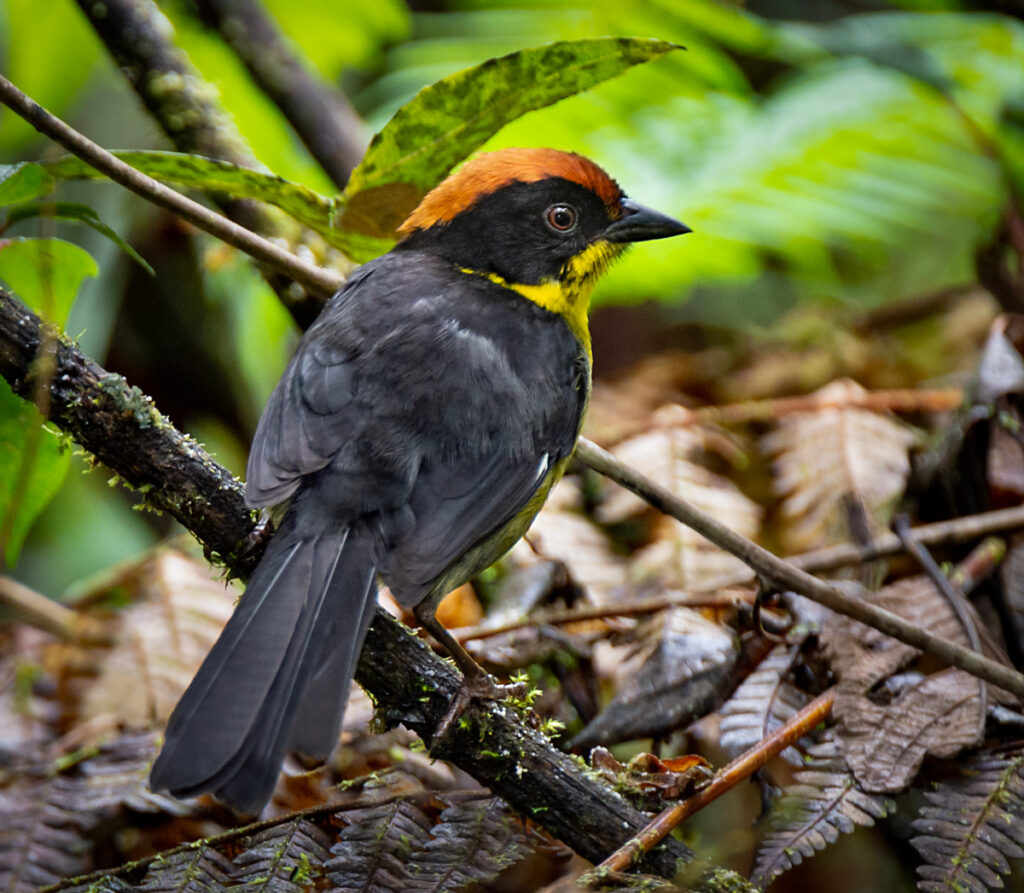
Tapichalaca Reserve is full of amazing birds. Although the Jocotoco Antpitta is the star attraction here, there are many more species that tempt the visitor to spend as much time here as possible. Masked Saltator and White-breasted Parakeet were unexpected goodies when I visited. Many of the birds here have bejeweled names like Golden-plumed Parakeet, Golden-crowned Tanager, Flame-throated Sunangel, and Amethyst-throated Sunangel; although less dramatic species like Rufous Wren, Barred Fruiteater, Blue-and-Black Tanager, and Yellow-breasted Brushfinch are common. Mammals like Mountain Tapir are also possible.
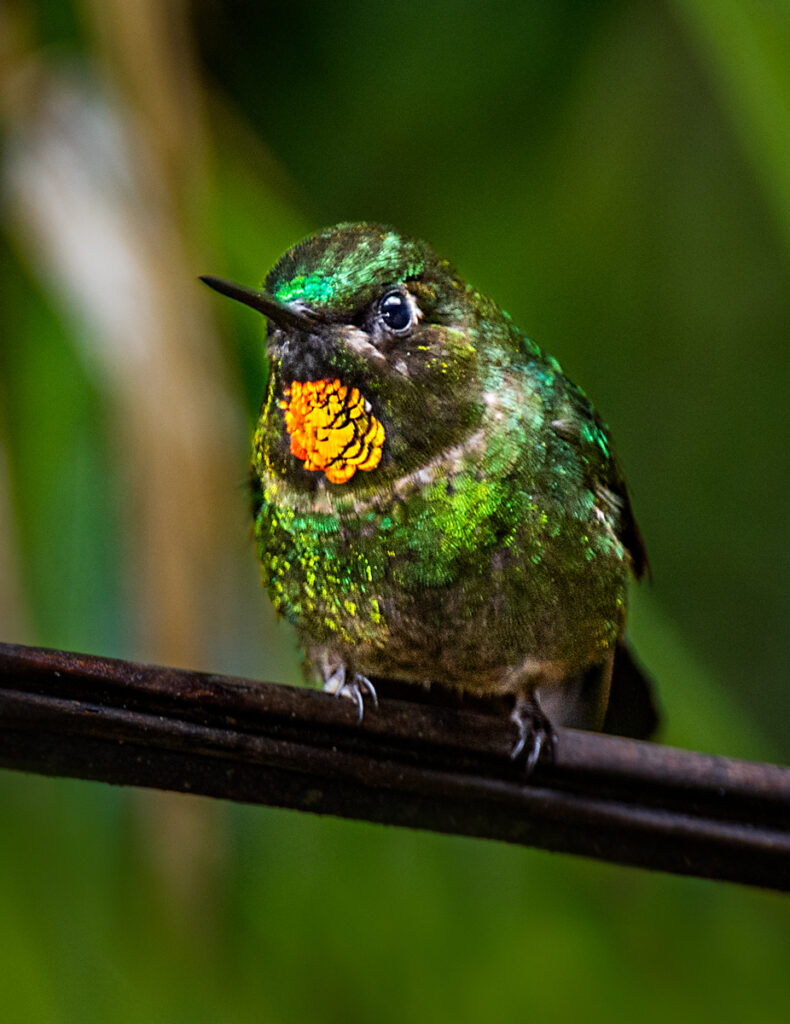
Photographers and birdwatchers interested in visiting Tapichalaca Reserve and staying at Casa Simpson Lodge can learn more and make reservations through Jocotours. American Bird Conservancy has long supported our partner Fundación Jocotoco Ecuador, including land acquisition, reforestation, capacity building, and promoting tourism through ConservationBirding at Tapichalaca Reserve.
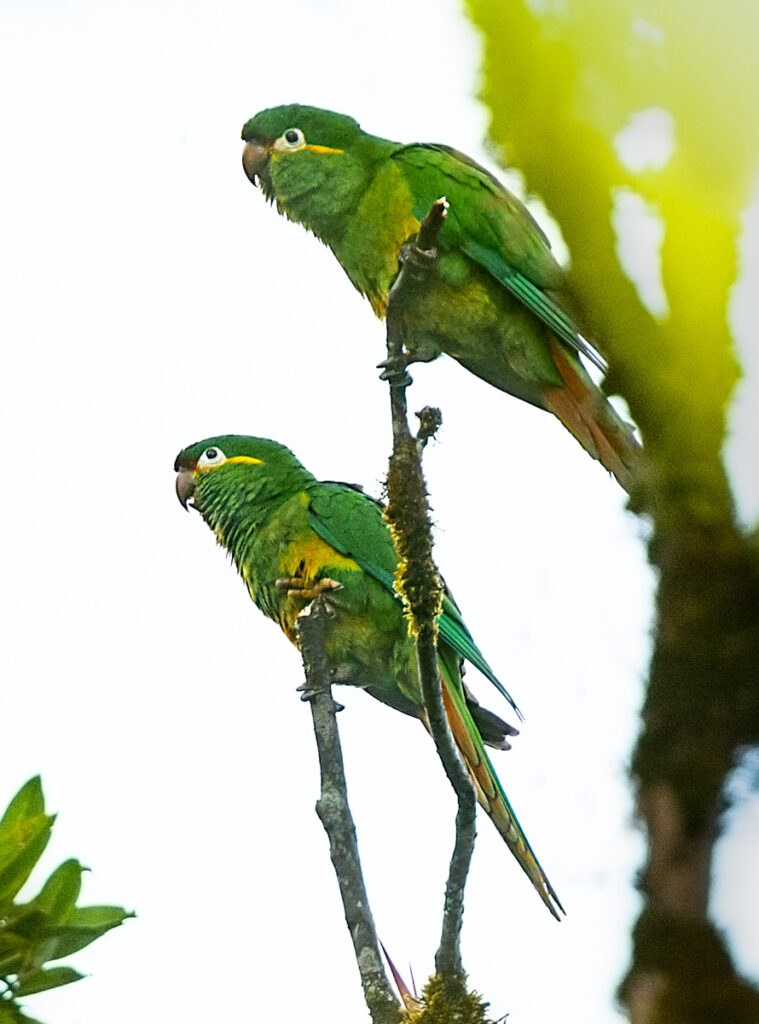
Additional Resources & References: For more on antpitta feeding stations in the Andes, see this 2010 Neotropical Birding review by Woods et al. Additional information on birding Fundación Jocotoco reserves in southern Ecuador is well presented in the following recent articles:
- Córdova Saeteros, M. L. 2020. Jocotoco’s southern circuit. Neotropical Birding. 27:15-29.
- Lebbin, D. J. & M. L. Córdova Saeteros. 2021. The Birding Jewels of Southern Ecuador: Using Ecotourism to Save Threatened Species. Birding 53(7): 52-60. Available online here.
